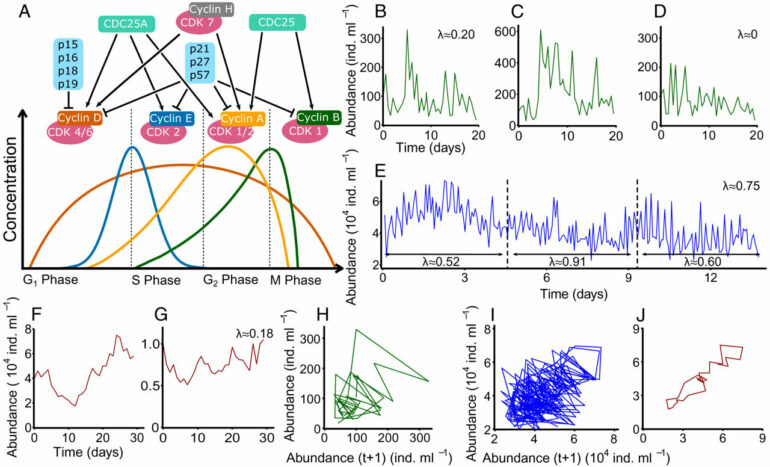Scientists at the University of Cologne and the University of Osnabrück have demonstrated for the first time, in biological systems with a single species, that chaos-like unpredictable dynamics can arise under completely constant external conditions. Such dynamics, for example fluctuations in population density, occur even without interactions with the environment or other species.
This may explain why such an enormous diversity of species has evolved on our planet. If, contrary to earlier assumptions, different species and evolutionary lineages are subject to irregular chaotic dynamics in and of themselves, they never encounter each other at the same time with the same number of individuals. Since direct competition among species thus becomes rare, they can coexist and evolve for much longer time periods. The current study has appeared in the Proceedings of the National Academy of Sciences (PNAS).
Biodiversity refers to the variety of life at all levels, from genes to entire ecosystems. It encompasses evolutionary, ecological, and cultural processes. It is not just about species we consider rare, threatened or endangered, but about all living things—from humans to organisms we know little about, such as microorganisms, fungi, and small invertebrates.
Biodiversity is an essential part of our lives. In addition to maintaining the stability of our own habitat, it also contributes to the fulfillment of many basic human needs, including as food, and serves as a supplier of energy or as a basis for medicines. In addition, biodiversity is important for pollination and seed dispersal and for controlling agricultural pests.
High biodiversity is a prerequisite for climate regulation. Nutrient cycles and the purification of drinking water and wastewater also require a high diversity of organisms. Humankind is currently destroying biodiversity at an alarming rate. A quarter of all species are considered threatened.
This study, which involved the research group of Professor Dr. Hartmut Arndt at the University of Cologne’s Institute of Zoology, investigated the mechanisms that have led to species diversity on our planet and what we need to consider to ensure that these mechanisms continue to be effective. Arndt and his team have been studying the dynamic processes of species coexistence as a basis for evolutionary processes in model organisms for many years.
Using laboratory experiments and model data, the scientists have demonstrated for the first time that uneven dynamics in the numbers of individuals in a population can significantly impact the coexistence of species even at the level of a single cell type without external drives. The importance of fluctuations in population densities and deterministic chaos—seemingly chaotic behavior even though the underlying conditions appear predictable—has been discussed for several decades as an important factor in species diversity in natural biological systems.
The two doctoral researchers Johannes Werner and Tobias Pietsch in Arndt’s team have now showed that, contrary to expectations, the evolutions of systems with only a single species in a continuous flow of nutrient medium exhibit dynamics that are not straightforward, even showing features of deterministic chaos.
That is, unpredictable fluctuations in individual numbers occur even under quite constant conditions and without interactions between different species or fluctuating environmental conditions. These data were supplemented by a modeling study conducted with theorist Frank Hilker at the University of Osnabrück. “The rather simple and general model we developed for the analysis of the cell division cycle exhibits a remarkable range of dynamic behavior,” says Johannes Werner, first author of the study.
The observed phenomenon has fundamental consequences for understanding evolutionary processes because the potential coexistence of competing species or cell lineages in changing abundance is an important basis for the high biodiversity on Earth.
“Allowing these fluctuations is essential for protecting biodiversity and its functions. Nature reserves, for example, should be large enough so that the natural ups and downs in the number of individuals of a species do not lead to complete extinction. Individuals should always remain to ensure the survival of the species, even under extreme weather conditions,” explained Hartmut Arndt.
More information:
Johannes Werner et al, Intrinsic nonlinear dynamics drive single-species systems, Proceedings of the National Academy of Sciences (2022). DOI: 10.1073/pnas.2209601119
Provided by
University of Cologne
Citation:
Why are there so many species? Chaos is an important factor for biodiversity (2022, November 11)



